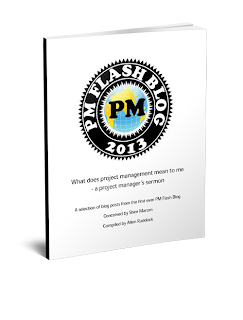Here's my three point estimate paradox:
We all know we must estimate with three points (numbers)... so we do it, reluctantly
None of us actually want to work with (do arithmetic with) the three points we estimate
In a word, three point estimates suck -- not convenient, thus often put aside even if estimated -- and most of all: who among us can do arithmetic with three point estimates?
But hey! Three point estimates are good for you ... they are the broccoli of projects
First question (are you whining? ): where does this really matter in the domain of project management?
- When adding up a budget or calculating the duration of a schedule
- When doing a risk register and someone says to multiply impact x probability
Second question: how do you go about it? Actually, you can build a couple of simple templates in a spreadsheet to do the arithmetic. Then fill in the 3 points, and presto! -- a summation or product (add or multiply) pops out.
The budget
To understand this, start with the basics:
- Suppose I have two work package budgets, one is fixed and one is uncertain. I use a 3-point estimate for the latter. I need the total budget
- As an example, with numbers:
- Fixed budget = 10
- Uncertain budget 3-pts: 5, 8, 12
- Possible totals: 10+5; 10+8; 10+12
- With no other information, pretend you are a Bayesian. You would say your "a priori" is that all 3 totals are equally possible. Thus: 1/3 * (15+18+22) = 18.3
The risk register
Multiplication is the issue with the risk register, typically I x P. Say what you will, but both I and P are uncertain, and usually P is the most uncertain. We usually have no real basis for assuming a probability since we usually have insufficient history to establish a reasonable frequency (1/P)
As an example with numbers, suppose I've been told that with some risk my budget is going to be cut by $50. For our purposes, we can take this impact as a single point "certainty". What's uncertain is whether or not there's much chance it will happen.
- Fixed impact = 50
- Uncertain probability (better thought of as a confidence of a some % or less): 10%, 30%, 50%
- Possible IxP products (this figure, or less): $5, 15, 25 (P is dimensionless, so IxP has the dimensions of I)
- Again we can do our Bayes thing (no information for the 'a priori') and come with the average IxP: 1/3 (45) = $15
- This extensible to uncertainty of both numbers wherein there will be 9 products
Is anybody going to do this on a real project with a spreadsheet? Likely not. But, this is the way a Monte Carlo simulation works and the MC Sim is common among projects run quantitatively.
Read in the library at Square Peg Consulting about these books I've written
Buy them at any online book retailer!
Read my contribution to the Flashblog

